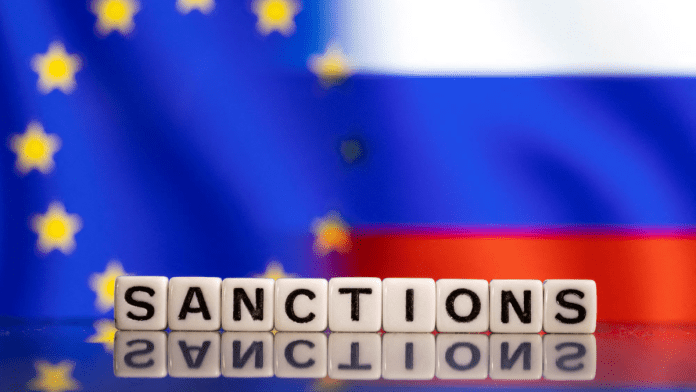As the war in Ukraine drags on, global leaders continue searching for ways to pressure Russia’s economy—particularly its massive oil revenues. The European Union recently launched its 18th sanctions package against Moscow. But with loopholes still in place, attention is now shifting toward a far more aggressive threat from U.S. President Donald Trump: steep tariffs on any country buying Russian oil.
EU’s Newest Sanctions Still Leave Major Loopholes
The European Union, led on foreign policy by Kaja Kallas, recently approved its 18th round of sanctions on Russia, calling it one of the strongest yet. But despite the bold announcement, the latest package still leaves major gaps that may limit its actual impact on Russia’s economy.
A key feature of the new sanctions is a lower price cap on Russian crude oil. The new cap, set at $47.60 per barrel, is meant to be 15% below the average price of Russian oil. This is a drop from the previous cap of $60 per barrel. The idea is to make it harder for Russia to profit from oil sales while still allowing global markets to function without price shocks.
The EU also introduced a fresh ban on refined oil products that are made from Russian crude, even if they are processed in countries like India, China, or Turkey. This move is intended to close a loophole that allowed Russian oil to enter the EU market indirectly.
EU sanctions slam India’s giant oil refinery—Rosneft’s Gujarat stronghold frozen
But this ban will not take effect until next year, giving countries time to adjust. In the meantime, Russia continues to export oil, earning large sums despite restrictions.
Shadow Fleet and Friendly Nations Help Russia Dodge Restrictions
Even with restrictions in place, Russia’s oil revenues remain high. In 2024, the country earned $192 billion from oil and oil products. That is far more than the $110 billion it spent on its defense budget.
Though exports slightly dropped in June, Russia still made $13.6 billion that month alone. The rise in revenue came mostly due to higher global oil prices. And many experts believe this is possible because Russia has found smart ways to go around the rules.
For example, Russia now uses a hidden network of ships, insurers, and traders. These help the country sell oil even when the price is above the EU’s set limit. Many of these ships operate in secret or use tactics like ship-to-ship transfers in the middle of the ocean to hide the oil’s origin.
The EU responded by adding 105 more tankers to its sanctions list, bringing the total to 447. But observers say that Russia may simply expand its shadow fleet or find other ways to move its oil.
India and China, two of the world’s largest buyers of oil, continue to buy large amounts of Russian crude. India alone sourced 38% of its crude oil from Russia in 2024. It also supplied 16% of Europe’s diesel and jet fuel needs last year. However, with the new EU ban, India may lose some of this business, creating opportunities for oil-rich Gulf countries to step in.
Trump’s Secondary Sanction Threat Draws Global Attention
With the EU’s sanctions leaving holes, all eyes are now on a threat made by U.S. President Donald Trump. He recently warned that any country buying oil from Russia could face a 100% tariff. This means those countries could lose access to trade with the United States if they continue business with Russia.
This type of move is called a “secondary sanction.” It does not just target Russia — it pressures other countries to stop trading with Russia too. It is a very strong economic weapon that could seriously cut Russia’s income from oil.
President Trump also said that Russia would have 50 days to agree to end its war, or the tariffs would go into effect. While this move could hit Russia hard, it also risks causing higher global oil prices. That would mean more expensive gasoline and energy costs around the world.
In recent weeks, Trump has also voiced frustration with Russian President Vladimir Putin, which adds more weight to the possibility of harsher action. However, because of the potential fallout, global oil traders and Russian officials are not reacting strongly — at least, not yet.
